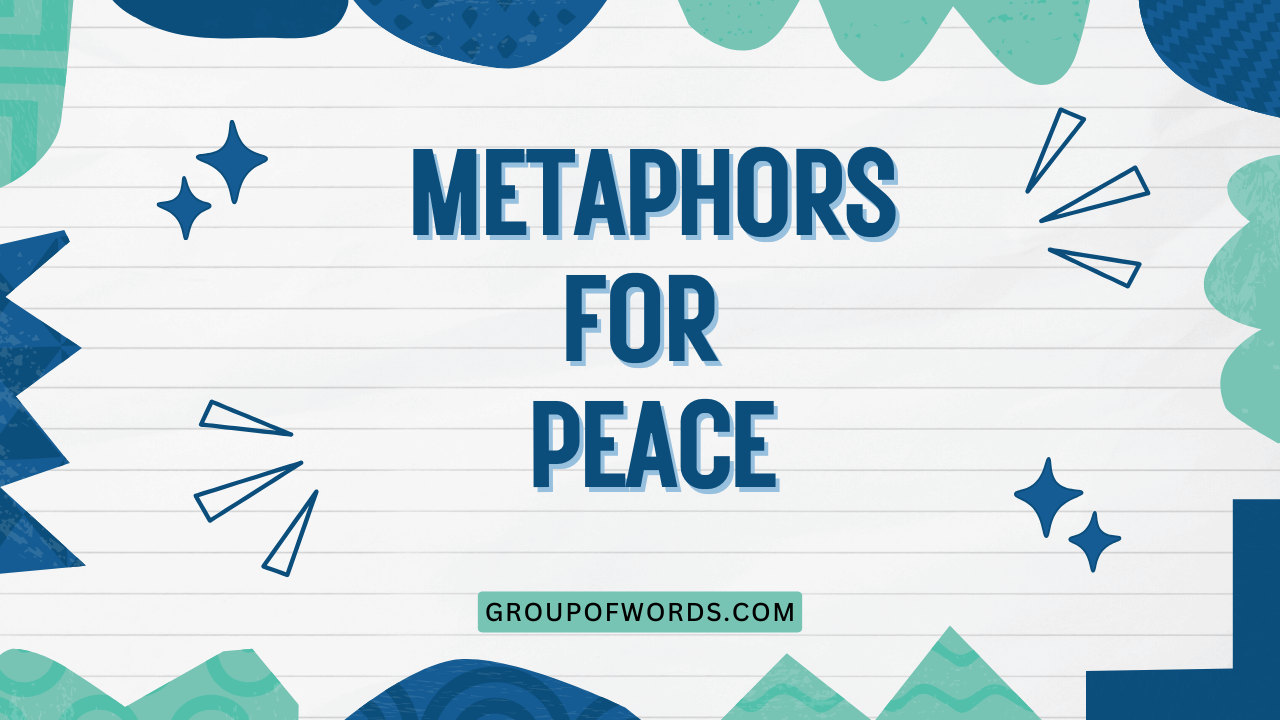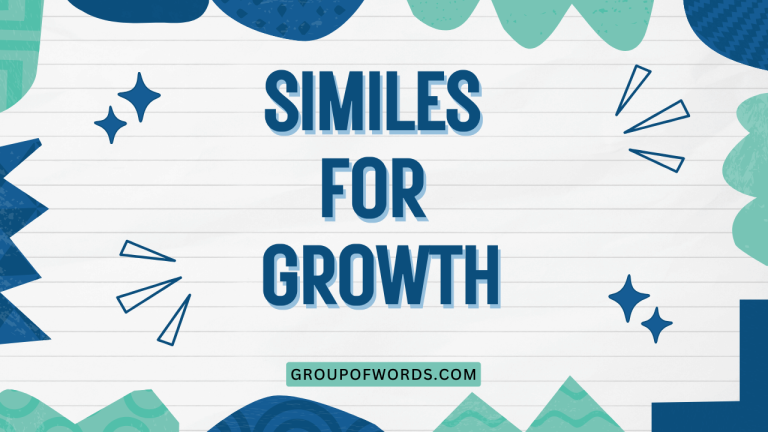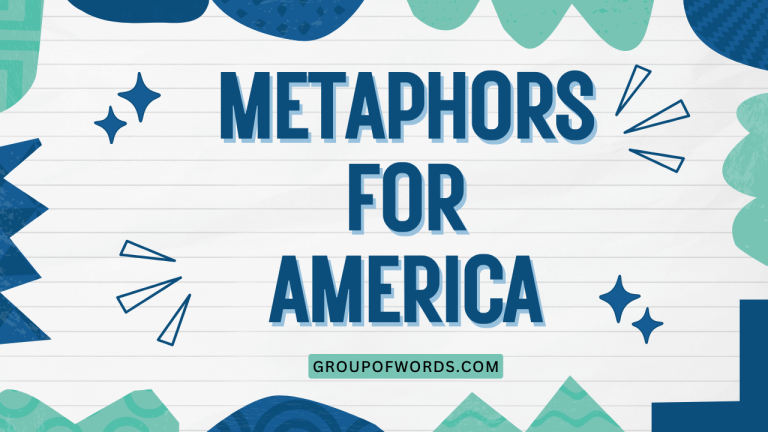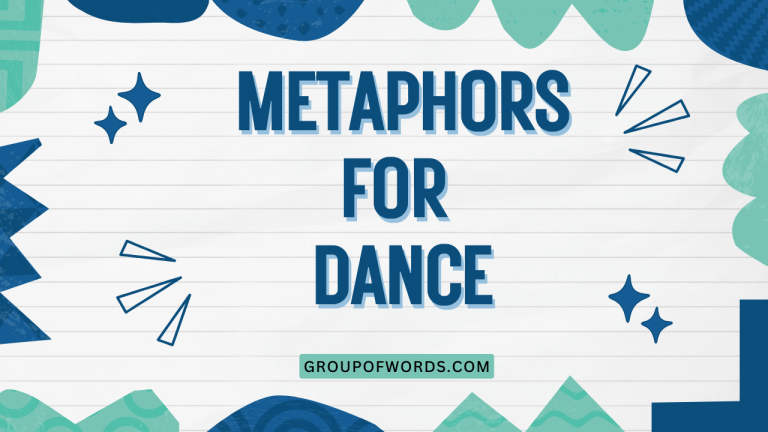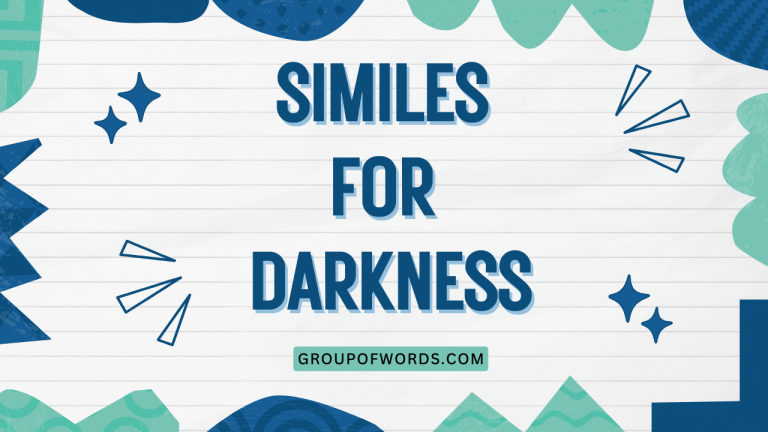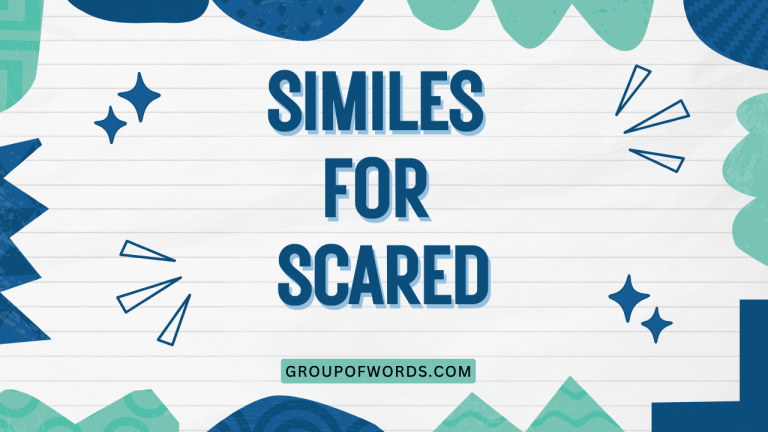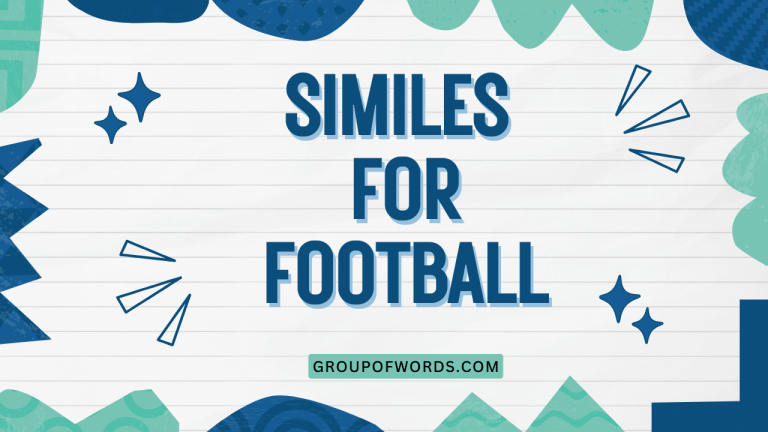Metaphors for Peace: A Comprehensive Guide
Understanding metaphors for peace is crucial for grasping the nuanced ways we conceptualize and communicate about this complex ideal. Metaphors, as figures of speech that transfer meaning from one domain to another, profoundly shape our perceptions of peace, influencing both our understanding and our actions.
This guide explores the various types of metaphors used to describe peace, their structural elements, usage rules, and common pitfalls. It is designed for English language learners, writers, speakers, and anyone interested in the powerful role of language in shaping our understanding of peace.
Table of Contents
- Introduction
- Definition of Metaphors for Peace
- Structural Breakdown of Peace Metaphors
- Types and Categories of Peace Metaphors
- Examples of Peace Metaphors
- Usage Rules for Peace Metaphors
- Common Mistakes When Using Peace Metaphors
- Practice Exercises
- Advanced Topics in Peace Metaphors
- Frequently Asked Questions
- Conclusion
Introduction
Metaphors are more than just decorative language; they are fundamental to how we think and understand abstract concepts. When we talk about peace, a concept often intangible and multifaceted, we rely heavily on metaphors to make it comprehensible.
By understanding the different ways peace is metaphorically represented, we can gain a deeper appreciation for its complexities and the various approaches to achieving it. This article provides a comprehensive overview of metaphors for peace, offering insights and practical guidance for effective communication and a richer understanding of this vital concept.
Definition of Metaphors for Peace
A metaphor for peace is a figure of speech that describes peace by comparing it to something else, highlighting shared qualities or characteristics. Metaphors transfer meaning from a concrete or familiar domain to the abstract concept of peace, making it easier to understand, visualize, and discuss.
These metaphors can be found in literature, political discourse, everyday conversation, and various forms of media. They serve not only to illustrate peace but also to influence how we perceive and pursue it.
Classification: Metaphors for peace fall under the broader category of conceptual metaphors, which are systematic ways of thinking about abstract concepts in terms of more concrete ones. They can also be classified based on the specific domains they draw from, such as nature, construction, or relationships.
Function: The primary function of peace metaphors is to make the abstract concept of peace more accessible and understandable. They also serve to evoke emotions, shape attitudes, and influence actions related to peacebuilding. Furthermore, they can frame political debates and justify specific policies or approaches to conflict resolution.
Contexts: Metaphors for peace are used in a wide range of contexts, including political speeches, peace negotiations, educational materials, religious texts, and personal reflections. The choice of metaphor often depends on the specific context, the intended audience, and the desired effect.
Structural Breakdown of Peace Metaphors
Understanding the structure of a metaphor involves identifying the source domain (the concrete concept used to describe peace) and the target domain (the abstract concept of peace itself). The metaphor works by mapping features from the source domain onto the target domain.
For example, in the metaphor “Peace is a fragile flower,” the source domain is “flower” and the target domain is “peace.” The metaphor maps qualities of a flower, such as fragility, beauty, and the need for nurturing, onto the concept of peace. This suggests that peace is delicate, valuable, and requires careful attention to flourish.
The effectiveness of a metaphor depends on the clarity and relevance of the mapping between the source and target domains. A strong metaphor will resonate with the audience and provide a new perspective on the concept of peace.
A weak or confusing metaphor may fail to communicate the intended meaning or even create misunderstandings.
Another aspect of the structural breakdown is understanding the implications of the metaphor. Each metaphor carries with it a set of assumptions and implications about the nature of peace. For instance, the metaphor “Peace is a journey” implies that peace is not a static state but rather a process that requires effort, perseverance, and a clear direction.
Types and Categories of Peace Metaphors
Metaphors for peace can be categorized based on the source domain they draw from. Here are some common categories:
Peace as a Journey
This metaphor portrays peace as a process or path that requires effort, time, and commitment. It emphasizes the idea that peace is not a destination but a continuous journey of understanding, reconciliation, and cooperation.
Peace as a Building
This metaphor likens peace to a structure that needs to be carefully constructed, brick by brick. It highlights the importance of laying a solid foundation, addressing structural weaknesses, and maintaining the building over time.
Peace as a Relationship
This metaphor emphasizes the interpersonal and social aspects of peace. It suggests that peace is based on mutual respect, trust, communication, and empathy.
It highlights the importance of nurturing relationships and resolving conflicts through dialogue and understanding.
Peace as Healing
This metaphor portrays peace as a process of recovery from trauma, conflict, and division. It emphasizes the need for forgiveness, reconciliation, and the restoration of wholeness.
It highlights the importance of addressing the root causes of conflict and providing support for those who have been affected by violence.
Peace as Light
This metaphor associates peace with illumination, clarity, and hope. It suggests that peace can dispel darkness, ignorance, and fear.
It highlights the importance of promoting understanding, knowledge, and positive values.
Peace as Stillness
This metaphor portrays peace as a state of calm, tranquility, and inner harmony. It emphasizes the importance of finding inner peace as a foundation for building outer peace.
It highlights the value of meditation, mindfulness, and other practices that promote inner peace.
Peace as Nature
This metaphor connects peace to the natural world, emphasizing harmony, balance, and growth. It suggests that peace is a natural state that can be cultivated and nurtured, like a garden or a forest.
It highlights the importance of respecting the environment and living in harmony with nature as essential components of lasting peace.
Examples of Peace Metaphors
The following tables provide examples of peace metaphors, categorized by type. Each example illustrates how the source domain is used to describe and understand the target domain of peace.
The following table presents examples of peace metaphors that utilize the concept of a journey. These metaphors emphasize the process and effort involved in achieving and maintaining peace.
| Category | Metaphor | Explanation |
|---|---|---|
| Peace as a Journey | “The road to peace is long and winding.” | Peace requires time, effort, and perseverance. |
| Peace as a Journey | “We are on a path towards lasting peace.” | Peace is a direction we are moving towards. |
| Peace as a Journey | “The journey of a thousand miles begins with a single step towards peace.” | Even small actions can contribute to peace. |
| Peace as a Journey | “Navigating the treacherous waters of conflict towards the shores of peace.” | Conflict is dangerous, and peace is a safe destination. |
| Peace as a Journey | “Embarking on a voyage of reconciliation.” | Reconciliation is an active process of discovery and healing. |
| Peace as a Journey | “Peace is not a destination, but a way of traveling.” | Peace is an ongoing process, not a final result. |
| Peace as a Journey | “The map to peace is written in the hearts of the people.” | Peace requires understanding and empathy. |
| Peace as a Journey | “We must clear the obstacles on the path to peace.” | Challenges need to be overcome to achieve peace. |
| Peace as a Journey | “The high road to peace requires forgiveness and understanding.” | Peace demands moral choices. |
| Peace as a Journey | “Peace is a pilgrimage we must all undertake.” | Peace is a sacred and important quest. |
| Peace as a Journey | “Building bridges instead of walls on the road to peace.” | Focus on connection and understanding. |
| Peace as a Journey | “Overcoming the hurdles in the race towards peace.” | Perseverance is key in achieving peace. |
| Peace as a Journey | “The ascent to peace is steep, but the view is worth it.” | Peace requires effort, but the rewards are great. |
| Peace as a Journey | “Walking hand in hand on the path to reconciliation.” | Unity and collaboration are important for peace. |
| Peace as a Journey | “Peace is the compass guiding us through the storm of conflict.” | Peace provides direction and hope. |
| Peace as a Journey | “The stepping stones to peace are empathy and compassion.” | Empathy and compassion are crucial for building peace. |
| Peace as a Journey | “Peace is the horizon we are always striving to reach.” | Peace is an ideal that we continuously work towards. |
| Peace as a Journey | “Removing the roadblocks on the highway to peace.” | Obstacles need to be addressed and removed for peace to prevail. |
| Peace as a Journey | “Peace is our North Star, guiding us through the darkness.” | Peace provides guidance and hope in difficult times. |
| Peace as a Journey | “The journey to peace begins with dialogue and understanding.” | Communication is the first step towards peace. |
| Peace as a Journey | “The path to peace is paved with forgiveness.” | Forgiveness is essential for achieving lasting peace. |
| Peace as a Journey | “Peace is a long and arduous trek through the mountains of conflict.” | Peace requires significant effort and resilience. |
| Peace as a Journey | “We are charting a new course towards peace.” | Peace requires innovation and new approaches. |
| Peace as a Journey | “Peace is the train we must all board together.” | Unity and collective action are necessary for achieving peace. |
| Peace as a Journey | “The road to peace is not always easy, but it is always worth it.” | Peace is valuable and worth the effort, despite the challenges. |
The following table presents examples of peace metaphors that utilize the concept of a building. These metaphors emphasize the construction, stability, and maintenance of peace.
| Category | Metaphor | Explanation |
|---|---|---|
| Peace as a Building | “Building a foundation for lasting peace.” | Peace requires a strong and stable base. |
| Peace as a Building | “The architecture of peace requires careful planning.” | Peace needs to be designed and implemented thoughtfully. |
| Peace as a Building | “Constructing a bridge of understanding between cultures.” | Understanding connects different groups. |
| Peace as a Building | “The walls of division must be torn down to build peace.” | Barriers need to be removed to achieve peace. |
| Peace as a Building | “Laying the cornerstone of a peaceful society.” | Peace starts with a fundamental principle. |
| Peace as a Building | “Peace is a house built on trust and respect.” | Trust and respect are essential for a stable peace. |
| Peace as a Building | “Renovating the foundations of our society to build a better peace.” | Peace requires addressing underlying issues. |
| Peace as a Building | “The blueprint for peace includes justice and equality.” | Peace requires fairness and equal rights. |
| Peace as a Building | “Building a strong framework for peace through international cooperation.” | Peace requires collaboration between nations. |
| Peace as a Building | “The scaffolding of peace needs constant maintenance.” | Peace requires ongoing effort and care. |
| Peace as a Building | “Constructing a monument to peace that will stand the test of time.” | Peace should be enduring and long-lasting. |
| Peace as a Building | “The cornerstone of peace is education.” | Education is a fundamental element for building peace. |
| Peace as a Building | “We must build a solid structure of peace, brick by brick.” | Peace is achieved through consistent and gradual efforts. |
| Peace as a Building | “Strengthening the pillars of peace through justice and reconciliation.” | Justice and reconciliation are crucial supports for peace. |
| Peace as a Building | “Building a fortress of peace against the storms of conflict.” | Peace provides protection against violence and discord. |
| Peace as a Building | “The foundation of peace is tolerance and understanding.” | Tolerance and understanding are essential for a stable peace. |
| Peace as a Building | “Constructing a tapestry of peace woven with threads of diversity.” | Peace embraces and values differences. |
| Peace as a Building | “The mortar that binds peace together is empathy.” | Empathy is the binding force that holds peace together. |
| Peace as a Building | “Building a sustainable structure of peace for future generations.” | Peace should be long-lasting and beneficial for all. |
| Peace as a Building | “The roof of peace protects us from the storms of hatred and violence.” | Peace provides safety and security. |
| Peace as a Building | “We are the architects of peace, designing a better world.” | We have the power to create a peaceful future. |
| Peace as a Building | “Building a temple of peace where all are welcome.” | Peace should be inclusive and accessible to everyone. |
| Peace as a Building | “The construction of peace requires the tools of diplomacy and dialogue.” | Diplomacy and dialogue are essential for building peace. |
| Peace as a Building | “Building a resilient framework of peace that can withstand challenges.” | Peace must be strong and adaptable. |
| Peace as a Building | “The walls of peace are built with the stones of forgiveness.” | Forgiveness is a vital component of peacebuilding. |
The following table presents examples of peace metaphors that utilize the concept of relationships. These metaphors emphasize the interpersonal connections and understanding needed for peace.
| Category | Metaphor | Explanation |
|---|---|---|
| Peace as a Relationship | “Peace is a delicate dance of diplomacy.” | Peace requires careful and coordinated action. |
| Peace as a Relationship | “Nurturing a peaceful relationship between nations.” | Peace requires care and attention. |
| Peace as a Relationship | “Building bridges of understanding between communities.” | Understanding connects different groups. |
| Peace as a Relationship | “Forgiveness is the key to unlocking peaceful relationships.” | Forgiveness is essential for reconciliation. |
| Peace as a Relationship | “Peace is a symphony of diverse voices in harmony.” | Peace embraces and values differences. |
| Peace as a Relationship | “Peace is a marriage of mutual respect and understanding.” | Respect and understanding are essential for a stable peace. |
| Peace as a Relationship | “Cultivating a garden of peace through dialogue and empathy.” | Peace requires nurturing and care. |
| Peace as a Relationship | “Peace is a partnership built on trust and cooperation.” | Trust and cooperation are fundamental to peace. |
| Peace as a Relationship | “Strengthening the bonds of peace through shared values and goals.” | Shared values and goals unite people. |
| Peace as a Relationship | “Peace is a conversation that never ends.” | Peace requires ongoing communication and dialogue. |
| Peace as a Relationship | “Weaving a tapestry of peace with the threads of different cultures.” | Peace incorporates diverse perspectives and traditions. |
| Peace as a Relationship | “Peace is a dialogue, not a monologue.” | Peace requires mutual communication and understanding. |
| Peace as a Relationship | “Building a community of peace where everyone belongs.” | Peace should be inclusive and welcoming. |
| Peace as a Relationship | “Peace is a hand extended in friendship.” | Peace involves reaching out to others with kindness and goodwill. |
| Peace as a Relationship | “Nurturing the seeds of peace through acts of kindness and compassion.” | Kindness and compassion promote peace. |
| Peace as a Relationship | “Peace is a circle of trust and reciprocity.” | Trust and mutual exchange are vital for peace. |
| Peace as a Relationship | “Peace is a collaborative effort, not a competitive game.” | Peace requires working together, not against each other. |
| Peace as a Relationship | “Mending broken relationships to heal the wounds of conflict.” | Reconciliation is essential for resolving conflict. |
| Peace as a Relationship | “Peace is a shared responsibility, not a solitary pursuit.” | Everyone has a role to play in creating peace. |
| Peace as a Relationship | “Building consensus and harmony in the orchestra of international relations.” | Agreement and cooperation are important for global peace. |
| Peace as a Relationship | “Peace is a friendship built on mutual respect and understanding.” | Respect and understanding are essential for lasting peace. |
| Peace as a Relationship | “Creating a network of peace that connects people across borders.” | Peace involves building connections and relationships worldwide. |
| Peace as a Relationship | “Peace is a partnership for progress and prosperity.” | Peace fosters development and well-being. |
| Peace as a Relationship | “The language of peace is empathy and compassion.” | Understanding and caring for others are crucial for peace. |
| Peace as a Relationship | “Peace is a shared dream that we can realize together.” | Peace is a collective vision that can be achieved through unity. |
Usage Rules for Peace Metaphors
When using metaphors for peace, it’s important to consider the following rules:
- Relevance: Choose metaphors that are relevant to the context and the audience. The metaphor should resonate with their experiences and understanding.
- Clarity: Ensure that the metaphor is clear and easy to understand. Avoid using obscure or overly complex metaphors that may confuse the audience.
- Consistency: Maintain consistency in the use of metaphors throughout your communication. Mixing metaphors can create confusion and weaken your message.
- Appropriateness: Select metaphors that are appropriate for the tone and purpose of your communication. Avoid using metaphors that are insensitive or offensive.
- Originality: Strive for originality in your use of metaphors. While common metaphors can be effective, using fresh and creative metaphors can capture the audience’s attention and provide a new perspective.
Common Mistakes When Using Peace Metaphors
Here are some common mistakes to avoid when using metaphors for peace:
- Mixing metaphors: Combining metaphors from different domains can create confusion and undermine the message.
- Incorrect: “The road to peace is a fragile flower that needs strong foundations.”
- Correct: “The road to peace is long and winding, requiring patience and perseverance.” or “Peace is a fragile flower that needs careful nurturing.”
- Using clichéd metaphors: Overused metaphors can lose their impact and make your communication sound unoriginal.
- Clichéd: “Peace is a light at the end of the tunnel.”
- Better: “Peace is the dawn breaking after a long night of conflict.”
- Using insensitive metaphors: Metaphors that trivialize or downplay the suffering caused by conflict can be offensive and counterproductive.
- Insensitive: “Conflict is just a minor bump in the road to peace.”
- Better: “Conflict is a deep wound that requires careful healing on the path to peace.”
- Ignoring cultural context: Metaphors can have different meanings in different cultures. Be mindful of cultural differences when using metaphors for peace.
- Example: A metaphor based on a specific religious tradition may not be understood or appreciated by people from other backgrounds.
Practice Exercises
Test your understanding of metaphors for peace with these exercises.
Exercise 1: Identifying Metaphors
Identify the metaphor in each of the following sentences:
| Question | Answer |
|---|---|
| 1. “Peace is a bridge that connects two warring nations.” | Peace is a bridge. |
| 2. “The seeds of peace must be planted in the hearts of the people.” | Seeds of peace. |
| 3. “Dialogue is the cornerstone of a peaceful society.” | Dialogue is the cornerstone. |
| 4. “Peace is a delicate ecosystem that requires balance and harmony.” | Peace is a delicate ecosystem. |
| 5. “Forgiveness is the key that unlocks the door to peace.” | Forgiveness is the key. |
| 6. “Peace is the music that silences the noise of war.” | Peace is the music. |
| 7. “The path to peace is paved with understanding and empathy.” | Path to peace is paved. |
| 8. “Peace is a tapestry woven with threads of different cultures.” | Peace is a tapestry. |
| 9. “Justice is the bedrock upon which peace is built.” | Justice is the bedrock. |
| 10. “Peace is a gentle breeze that soothes the wounds of conflict.” | Peace is a gentle breeze. |
Exercise 2: Categorizing Metaphors
Categorize the following metaphors for peace based on their source domain (e.g., journey, building, relationship, healing, light, nature):
| Question | Answer |
|---|---|
| 1. “Peace is a beacon of hope in a world of darkness.” | Light |
| 2. “The road to peace is long and arduous.” | Journey |
| 3. “Peace is a fragile flower that needs careful nurturing.” | Nature |
| 4. “Building bridges of understanding between communities.” | Building |
| 5. “Forgiveness is the medicine that heals the wounds of war.” | Healing |
| 6. “Peace is a symphony of diverse voices in harmony.” | Relationship |
| 7. “Laying the foundation for a peaceful society.” | Building |
| 8. “Peace is a journey of reconciliation and forgiveness.” | Journey |
| 9. “The warmth of peace melts the ice of hatred.” | Light |
| 10. “Peace is a garden that blossoms with care and attention.” | Nature |
Exercise 3: Creating Metaphors
Create your own metaphor for peace using each of the following source domains:
- Water
- Music
- Art
- Dance
- Cooking
Example Answers:
- Peace is a flowing river, nourishing all life in its path.
- Peace is a harmonious melody, uniting different voices in a beautiful song.
- Peace is a vibrant painting, blending diverse colors into a masterpiece of unity.
- Peace is a graceful dance, where partners move in harmony and mutual respect.
- Peace is a delicious meal, where different ingredients come together to create a satisfying and nourishing whole.
Advanced Topics in Peace Metaphors
For advanced learners, consider exploring the following topics:
- The role of metaphors in peace negotiations: How do metaphors shape the framing of conflicts and the potential for resolution?
- The use of metaphors in peace education: How can metaphors be used to promote understanding and empathy among students?
- The cultural variations in peace metaphors: How do different cultures conceptualize peace through different metaphors?
- The ethical implications of using peace metaphors: How can metaphors be used to promote or undermine peacebuilding efforts?
- The relationship between metaphors and peace movements: How do metaphors inspire and mobilize people to work for peace?
Frequently Asked Questions
- What is the difference between a metaphor and a simile?
A metaphor directly equates two things (e.g., “Peace is a journey”), while a simile uses “like” or “as” to make a comparison (e.g., “Peace is like a journey”).
- Why are metaphors important for understanding peace?
Metaphors make the abstract concept of peace more concrete and accessible, helping us to visualize, understand, and communicate about it more effectively and emotionally. They provide a framework for thinking about peace in different ways.
- Can metaphors for peace be harmful?
Yes, metaphors can be harmful if they are insensitive, clichéd, or used to manipulate or mislead. It’s important to choose metaphors carefully and be mindful of their potential impact.
- How can I improve my ability to use metaphors for peace?
Read widely, pay attention to how metaphors are used in different contexts, and practice creating your own metaphors. Be mindful of the relevance, clarity, and appropriateness of your metaphors.
- What are some examples of negative metaphors related to peace?
Negative metaphors might portray peace as weakness, naivety, or a surrender to injustice. For example, “Peace at any price” suggests that peace is not worth fighting for, even if it means compromising important values.
- How do metaphors for peace differ across cultures?
Different cultures may have different values, beliefs, and experiences related to peace, which can influence the metaphors they use. For example, some cultures may emphasize harmony with nature, while others may focus on social justice or inner peace.
- What is the role of context in interpreting metaphors for peace?
Context is crucial for understanding the intended meaning of a metaphor. The same metaphor can have different interpretations depending on the specific situation, the speaker, and the audience.
- How can I avoid using clichéd metaphors for peace?
Try to think beyond the obvious and explore new ways of representing peace. Consider using metaphors from unexpected domains or combining familiar elements in novel ways. Brainstorm and experiment with different ideas until you find a metaphor that feels fresh and original.
Conclusion
Metaphors for peace are powerful tools for shaping our understanding and communication about this complex concept. By understanding the different types of metaphors, their structural elements, and usage rules, we can use them more effectively to promote peacebuilding and foster a deeper appreciation for the value of peace.
Remember to choose metaphors that are relevant, clear, consistent, appropriate, and, when possible, original. Avoid common mistakes such as mixing metaphors or using clichéd language.
With practice and careful consideration, you can harness the power of metaphors to inspire hope, promote understanding, and contribute to a more peaceful world.
